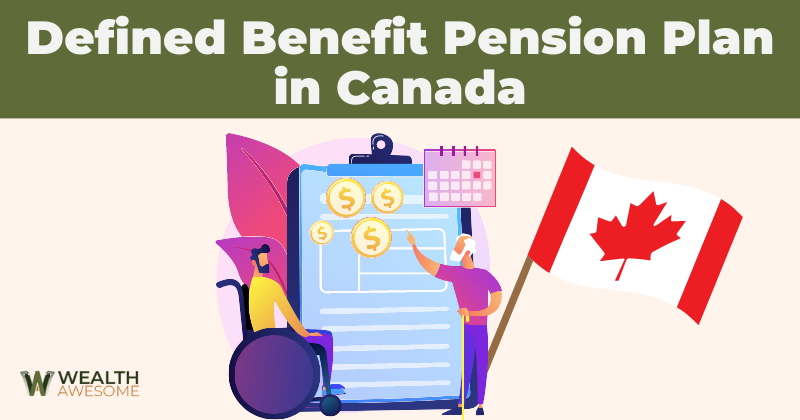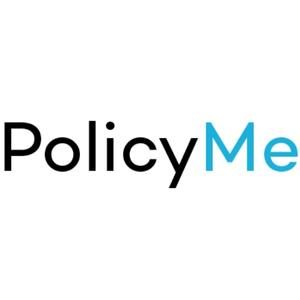A defined benefit pension plan (DBPP) is often a confusing topic for many Canadians.
This post will help you understand how the DBPP works, and how it differs from other types of pensions.
What is a Defined Benefit Pension Plan in Canada?
The DBPP in Canada is one of the two main types of registered pension plans you can use in Canada. According to this plan, the company you work for will pay you a predefined monthly income for life after you retire as an employee of the company.
The DBPP amount you receive by the time you retire can be calculated in various ways. Typically, the formula used to calculate the payments you receive is based on the average highest salary you made while you were at the company and the number of years of service you provided the company.
While it is not necessary, you may have to make contributions to the plan. The employee will also make contributions to this plan and accumulate the amount in a fund that it manages. The employer manages the funds and invests it to grow the overall amount.
In this plan, the employer is responsible for guaranteeing a certain amount in payments to their employees. The benefit is already defined, regardless of the performance of the investment.
DBPP Has No Investment Risk to You
In a Defined Benefit Pension Plan, the employer essentially carries all the investment risk for the funds. Employees have very little control over the funds until they start receiving the money when they retire.
The employer is entirely responsible for investing and distributing the funds. DBPPs usually require complex actuarial projections and insurance that can offer a guarantee due to the risks involved for the employer. The administration costs for these plans are higher for the company.
Over recent years, there has been an increasing preference for Defined Contribution Pension Plans (DCPPs), as employers don’t want to be responsible for this risk anymore. You can read more about the differences below.
How Much Money Can You Receive From a Defined Benefit Pension Plan?
Perhaps the best thing about a DBPP in Canada is that it entitles employees to a fixed benefit that they will receive based on their income. The amount is predefined, and employees have no responsibility for managing the funds to ensure their income in their retirement.
The amount you can receive from a Defined Benefit Pension Plan in Canada can drastically differ. However, there is a way to find out the probable amount you can get from your employer.
While the way your employer calculates the exact amount can differ, there is a formula that uses your average highest salary at the company and the number of years you have worked there.
The most popular formula for a DBPP is 2% of your average pensionable earnings during the company’s highest income years multiplied by the number of years of pensionable service at the organization.
Both you and the employer will be contributing to this plan, but it is primarily the employer’s responsibility to make sure you receive your pension. If you retire before a certain age and you have not worked at the organization for long enough, your pension from the company may be subject to an early retirement discount.
If you choose to leave a Defined Benefit Pension Plan before you retire, your employer may give you the option to transfer the commuted value of your pension to a locked-in registered retirement savings plan account. This amount is essentially what the projected benefit might be worth as a single payout today.
Example of a Defined Benefit Pension Plan
Let’s consider David. David works for a particular well-paying company for several years before his retirement. The organization employs a Defined Benefit Pension Plan in Canada that uses the formula of multiplying a certain percentage (let’s assume 2%) of the best average income (let’s assume $50,000) for the last period before retirement. The calculation multiplies by the years of service (let’s assume 25 years).
The amount that David can receive for his Defined Benefit Pension Plan would total 2% x $50,000 x 25 = $25,000 per year. The DBPP is essentially a flat-rate benefit. The pension can vary from employer to employer. The benefits can be higher or lower than the amount David might receive per year after his retirement.
How Defined Benefit Differs From Defined Contribution Pension Plan
The DBPP is one of the two main pension plans used in Canada. The Defined Contribution Pension Plan (DCPP) is another pension plan that has become popular over the years. It can differ in several ways from the DBPP including:
- Contributions: A DCPP requires employees to make contributions to their plan, and the employer may match their payments. A DBPP is primarily the employer’s responsibility to handle.
- Investment Options: The employee manages their DCPP. The employer handles all the responsibility of how the funds are invested and grown in a DBPP.
- Amount received: There is no predefined amount you can receive when you retire with a DCPP. It all depends on how well you invested your funds. A DBPP is a predefined amount based on the salary and years of service multiplied by a certain percentage. It entitles employees to a guaranteed and fixed retirement income from the company, regardless of the performance of the investments.
- Portability: The DBPP is not a portable plan because the funds are in an account managed by the employer. You can transfer your DCPP when you move to another company because the amount is yours, and you have an individual account for it.
Pros and Cons of Defined Benefit Pension Plan in Canada
The Defined Benefit Pension Plan in Canada has its advantages and disadvantages for you. I will discuss the pros and cons of the DBPP to help you determine whether it works better for you compared to a DCPP.
Pros
- You know that there is a guaranteed income that is fixed.
- It is possible to get payroll deductions for employee contributions.
- The employer takes on the responsibility for investing the funds and any deficits.
- The pension plan contributions do not have to be declared as income by the employee until the amount is paid out in the form of annuities or pensions after retirement.
- The funds are professionally managed to maximize returns.
Cons
- Employees do not have individual accounts and only have rights to a stream of payments, not to an account.
- The pension plan is not transferable. If you choose to exit a DBPP, you can take the amount as a lump sum payment.
- You have no control over how the funds are invested. Even if you are financially savvy and feel you could make better investments, the company bears all the responsibility.
- It is a lot more challenging to understand and navigate.
- There aren’t many DBPPs available anymore, as employers are not willing to take on this risk.






Many public sector DBPP allow the employee to transfer the value of one public sector pension to the new pension plan when a person changes jobs. This is usually more advantageous than a lump sum payment.
Yes that’s a good point Maureen! Thanks for your input.